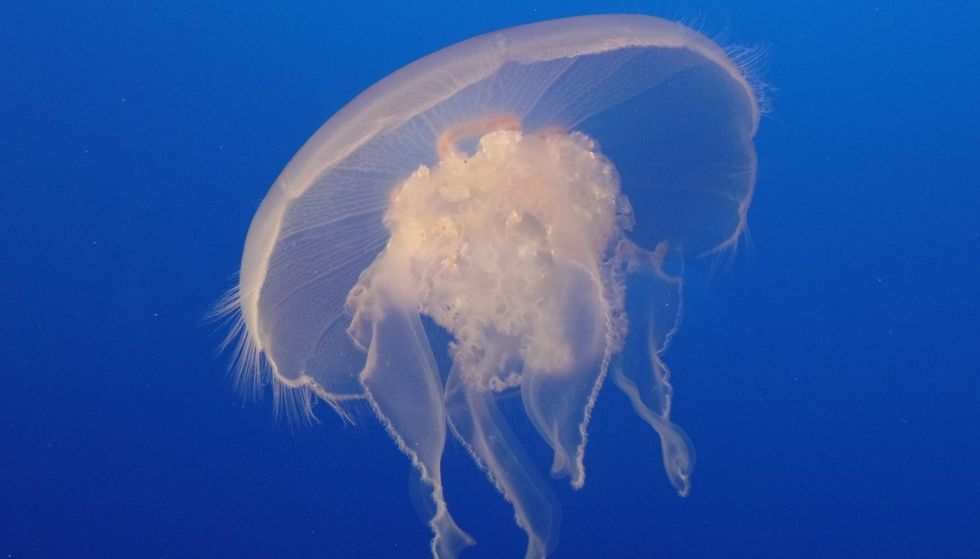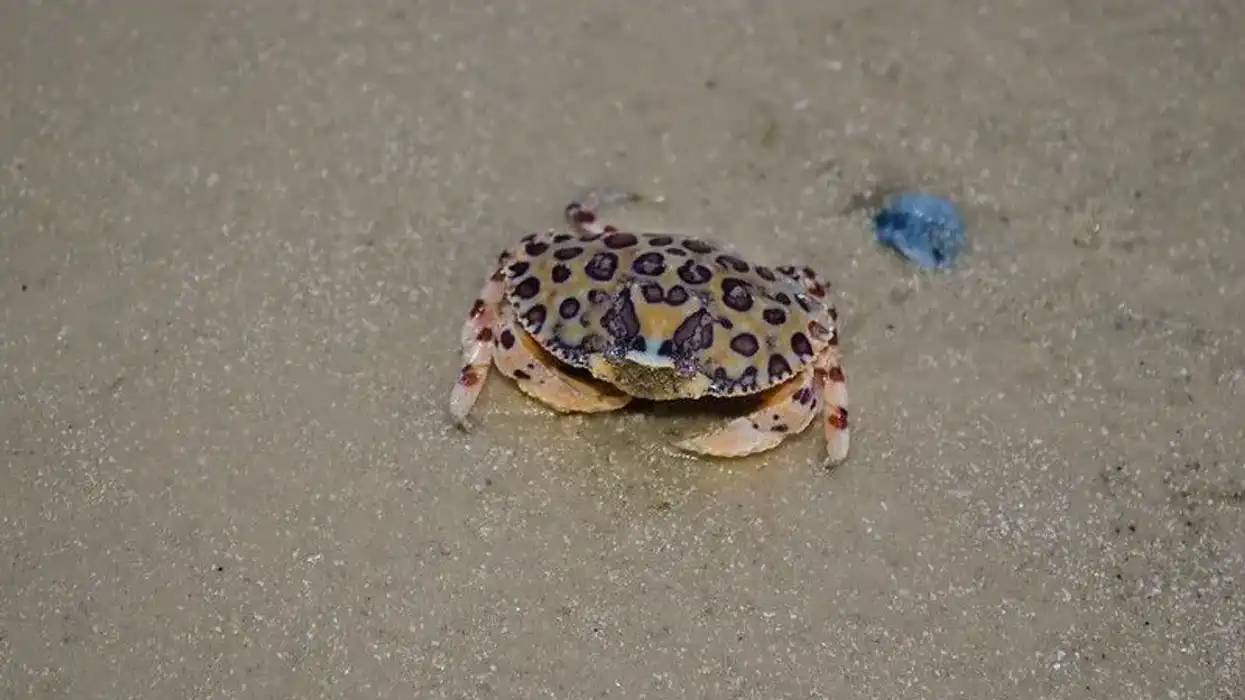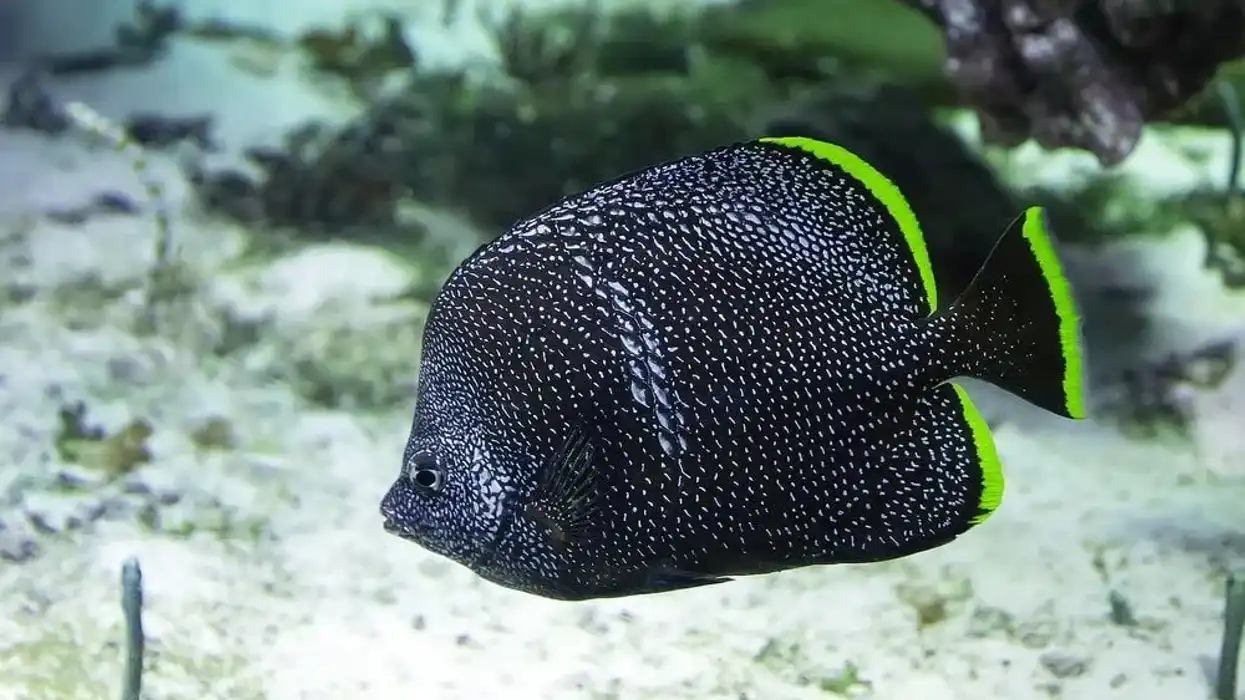The moon jellyfish has several names attached to it such as the common jellyfish, the moon jelly, and also the saucer jelly because of its shape, however, it is mostly known by its scientific name which is Aurelia aurita. This jellyfish is a translucent yet dangerous animal that is only 2-15 in (5-38 cm) long.
It is usually recognized by its 'bell' on the top of its body and it has long tentacles through which it feeds. It feeds on three main animals: medusae, plankton, and mollusks.
These jellyfish are carnivores.
They are usually found along the eastern Atlantic coast of Europe and the western Atlantic coast of North America. They are often seen along the coasts in Canada as well.
To learn more about moon jellies, keep reading these interesting facts. You can also find out all about jellyfish and the immortal jellyfish here on Kidadl.
Moon Jellyfish Interesting Facts
What type of animal is a moon jellyfish?
The moon jellyfish is a type of jellyfish that lives in the ocean.
What class of animal does a moon jellyfish belong to?
It is an animal that comes under the genus of Aurelia and the Scyphozoa class.
How many moon jellyfish are there in the world?
The exact number of moon jellyfish in the world is currently unknown.
Where does a moon jellyfish live?
The moon jellyfish lives in the ocean. They are found in a wide range of ocean habitats around the world.
What is a moon jellyfish's habitat?
A moon jellyfish habitat is found along the warm coastlines 0f several oceans such as the Atlantic Ocean, the Indian Ocean, and the Pacific Ocean. They usually swim on the surface but they need to dive, they can dive up to 90 ft (27.4 m) deep or more.
Who do moon jellyfish live with?
Moon jellyfish usually choose to live alone. However, sometimes they do roam the oceans within packs or groups of other moon jellyfish. This pack or group of jellyfish is known as a 'bloom'.
How long does a moon jellyfish live?
The average moon jellyfish life cycle lasts for between eight to 12 months.
How do they reproduce?
Moon jellyfish reproduce through external fertilization. This is when female eggs and male sperm are released in the water column and the sperm fertilize the eggs in the water. Once the eggs are fertilized, larvae hatch from them.
What is their conservation status?
They are not an endangered species but due to certain marine imbalances, they are in some danger and there are some conservation efforts in place to protect the species. However, this threat is not significant, and so the species is listed as Least Concern by the IUCN.
Moon Jellyfish Fun Facts
What do moon jellyfish look like?
The moon jellyfish has lots of tentacles and is usually recognized by the 'bell' on the top of its head. It has long tentacles through which it feeds on animals and protects itself from predators.
How cute are they?
Moon jellyfish are not necessarily cute. They look exquisite but only from a distance!
How do they communicate?
The moon jellyfish uses smell and taste to communicate in different situations in the dark and the light. Some species of jellyfish also use certain chemicals to communicate as well.
How big is a moon jellyfish?
The moon jellyfish is 3 in (7.6 cm) tall, 2-15 in (5-38 cm) long, and has a tiny weight that is almost negligible. Technically they weigh between 0.005-0.07 lb (0.224-3.2 g).
How fast can a moon jellyfish swim?
The moon jellyfish is capable of swimming at a speed of 0.79 in per second (2 cm per second). However, when they need to catch their prey, they can swim faster!
How much does a moon jellyfish weigh?
The moon jellyfish weighs between 0.005-0.07 lb (0.224-3.2 g).
What are the male and female names of the species?
This species of jellyfish does not have specific names for females and males
What would you call a baby moon jellyfish?
A baby Moon jellyfish are called 'ephyrae'. They are also colloquially known as baby jellies.
What do they eat?
Moon jellyfish have three main parts of their diet: medusae, plankton, and mollusks. Feeding on all three of these marine animals makes up the majority of the moon jellyfish diet.
Are they dangerous?
Yes, the stinging cells of jellyfish are very dangerous, and their tentacles can cause great damage. Luckily though, they are not harmful enough to kill humans.
Whilst simply touching a moon jellyfish will not cause great damage, you will still feel a slight sting, so it is best not to touch them!
However, the moon jellyfish sting is used for their protection as well as there are a lot of marine predators who want to devour them. Their oral arms produce a sting that can cause great damage to predators and humans.
Would they make a good pet?
No, moon jellies are not good pets as they have stinging cells that can cause death or pain. Therefore the moon jellyfish's sting is too dangerous to keep the animal as a pet. You shouldn't keep a moon jellyfish as a pet as they belong in their ocean habitat with other aquatic animals.
Did you know...
These moon jellies have no brains!
Moon jellies cannot and do not know how to swim, it is the currents of the ocean and the wind that directs them.
What eats moon jellyfish?
Mainly birds, fish, sea turtles, and other marine animals in the ocean eat these moon jellies. However, humans also like to eat moon jellyfish too, it is particularly popular in Southeast Asia.
How do moon jellyfish protect themselves?
Moon jellyfish drift off and swim along with water currents. To keep themselves safe whilst traveling through the water, they often travel in groups that are called ‘blooms’.
Moon jellyfish have a system of swimming, in which they swim in a horizontal direction and point their bells towards the surface of the water. When swimming like this, they spread their tentacles as soon as they see food that they want to catch.
They can also do the same thing if they need to defend themselves from a predator.
Moon jellyfish defend themselves by spreading their tentacles and stinging the attacker or the object that is posing the threat. The bell of the moon jellyfish has coronal muscles that pulsate like a human heart does (showing that moon jellyfish are alive), causing movement in the moon jellyfish.
Here at Kidadl, we have carefully created lots of interesting family-friendly animal facts for everyone to discover! For more relatable content, check out these freshwater mussels facts and barnacle facts for kids.
You can even occupy yourself at home by coloring in one of our free printable moon jellyfish coloring pages.










